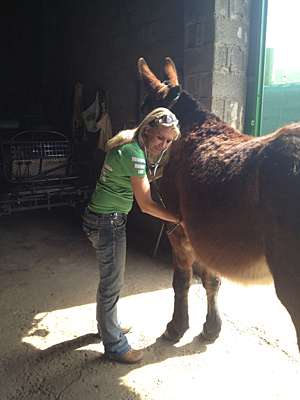Study shines light on mules, their blood chemistry

Offspring of female horses and male donkeys, mules are often associated with caution and hard work. While they'll never be mistaken for thoroughbreds, mules play important roles in modern society – performing grunt work in areas from developing countries to the forests of Colorado.
But even though mules have worked alongside people for countless generations, there is a dearth of basic information about mule blood chemistry, body temperature and other important health measures. This sometimes makes it difficult to provide proper health care for these beasts of burden.
Amy McLean, an equine specialist at NC State, is trying to fill in those gaps. She and a colleague from Vanderbilt University conducted a pilot study that compared blood work in healthy horses and mules owned by the U.S. Forest Service.
Perhaps counterintuitively, the study showed that mules – known in the equine family to be ruggedly healthy and more resistant to disease – have fewer soldiers in their disease-fighting arsenal than horses.
The study showed that mules had lower white blood cell, lymphocyte and monocyte counts than horses. These cells work to prevent infection and generally keep animals – and people – healthy.
Mules also had more mean corpuscular volume – a combination of red blood cell concentration and total red blood cells – than horses, suggesting that their strong will may also extend to anemia prevention.
Yet the research also showed that in most other blood-chemistry measures studied, mules and horses were quite similar.
McLean will present the study's findings at the Equine Science Society symposium in Mescalero, N.M., on May 28.
McLean is now working with European colleagues on a larger study comparing baseline blood chemistry of mules, horses, donkeys and hinnies, which are offspring of female donkeys and male horses. That study will provide even more insight on equine blood chemistry and its parental influences, opening the door to better care for our equine friends.
Provided by North Carolina State University















